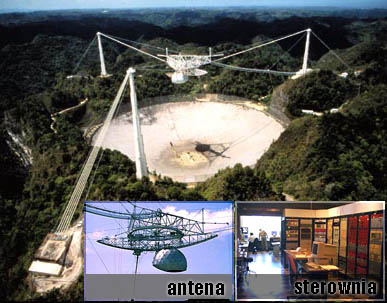Applied in the known universe mapping project

The radio telescope at the Arecibo Observatory in Puerto Rico began mapping the known galaxies this week. The radio telescope that is the world's most sensitive instrument powerful enough to hear planets forming a billion light-years away, recently gained six additional radio receivers designed to extend its range.
The $12 million upgrade, dubbed Project Alpha, was completed a few weeks ago and XNUMX scientists began using the telescope last Friday to map the night sky for posterity. This is what the astronomer Dan Wertheimer Werthimer said.
Arecibo is expected to discover thousands of pulsars, supernovae, black holes and planets. The mapping, which will contain detailed information about the locations, identity and properties of everything in space, will be above and beyond all the maps that exist today, the researchers said. No such mapping has been possible until now because of the telescope's limited field of view.
"The new upgrade means that we have seven telescopes of the Arecibo type at the same time." Wertheimer said. "You can see seven different parts of the galaxy at the same time. Mapping will be seven times faster."
The mapping should be complete within a few months if all viewing time was devoted to Project Alpha, said Sixto Gonzalez, director of the observatory. However, the process will take at least two years to allow the astronomers to work on other projects, such as the search for intelligent life abroad." said.
Alpha, short for the Arecibo L-Band Feed Array, discovered the first pulsar about a month ago during a test observation, Gonzalez said. The parabolic antenna with a diameter of about 300 meters consists of 38,000 aluminum tiles, allowing researchers to listen to sounds from space without depending on visible light, like the other ground telescopes and the space telescope.
The information collected will be processed in databases all over the world that the scientists will be able to access via the Internet. The observatory and its large plate were built in 1963 by the Ministry of Defense. It is now operated by Cornell University for the National Science Foundation.
The 1974 discovery of a pair of neutron stars earned two scientists a Nobel Prize in 1993 when they used it to prove Einstein's theory of gravitational waves. Other findings include ice on the planet Mercury and the first known planet outside the solar system.
In any case, the dish is known for its appearance in films, including Contact, and the James Bond film Golden Eye, although the search for aliens consumes less than XNUMX percent of the telescope's time.
